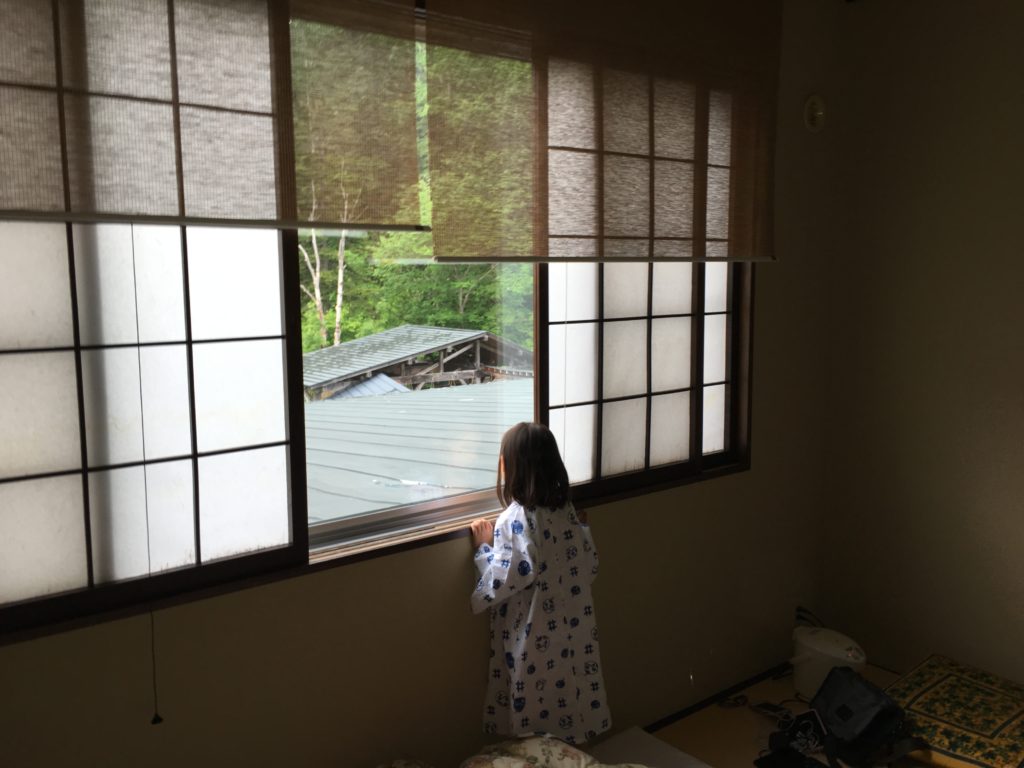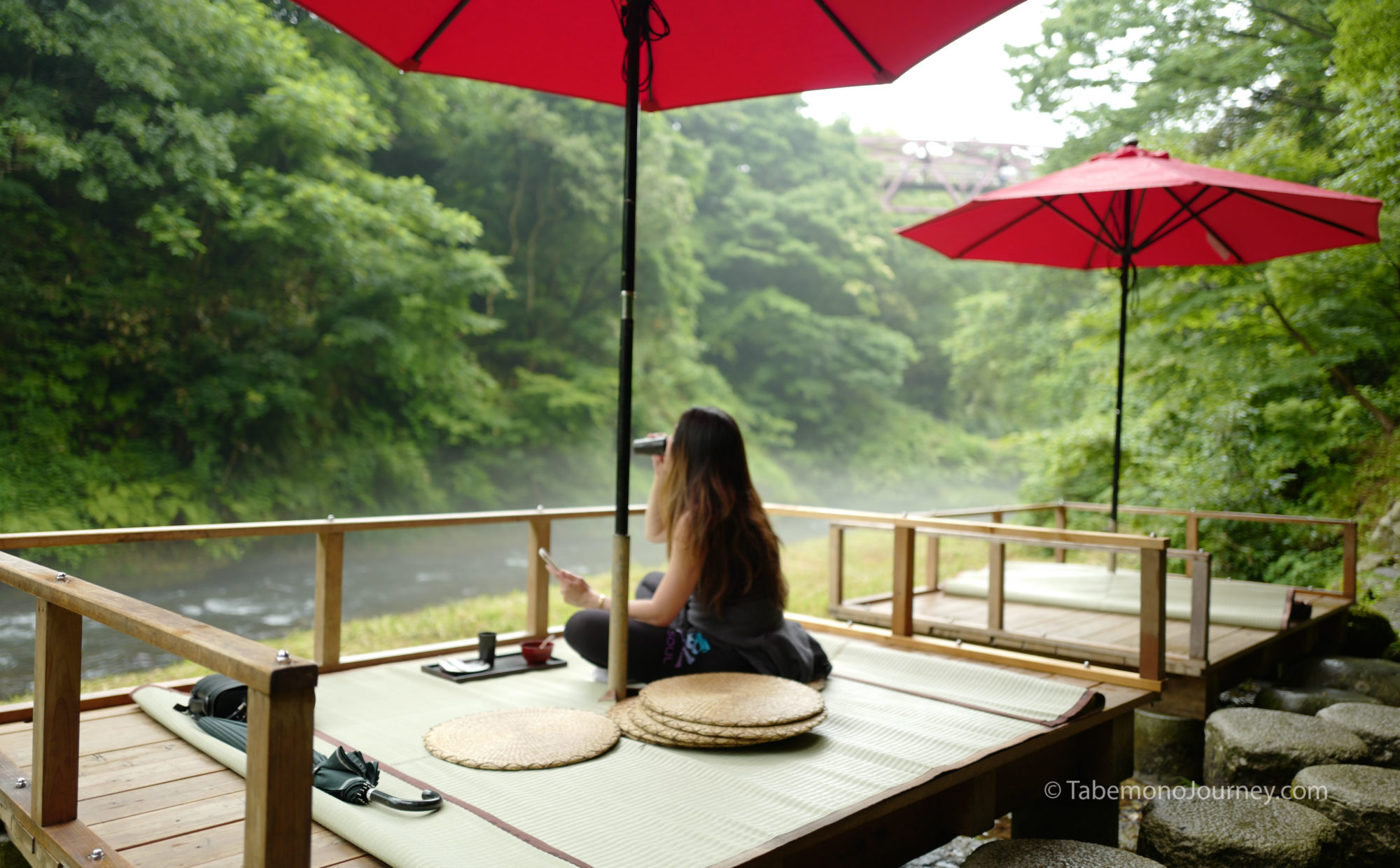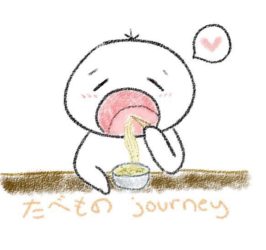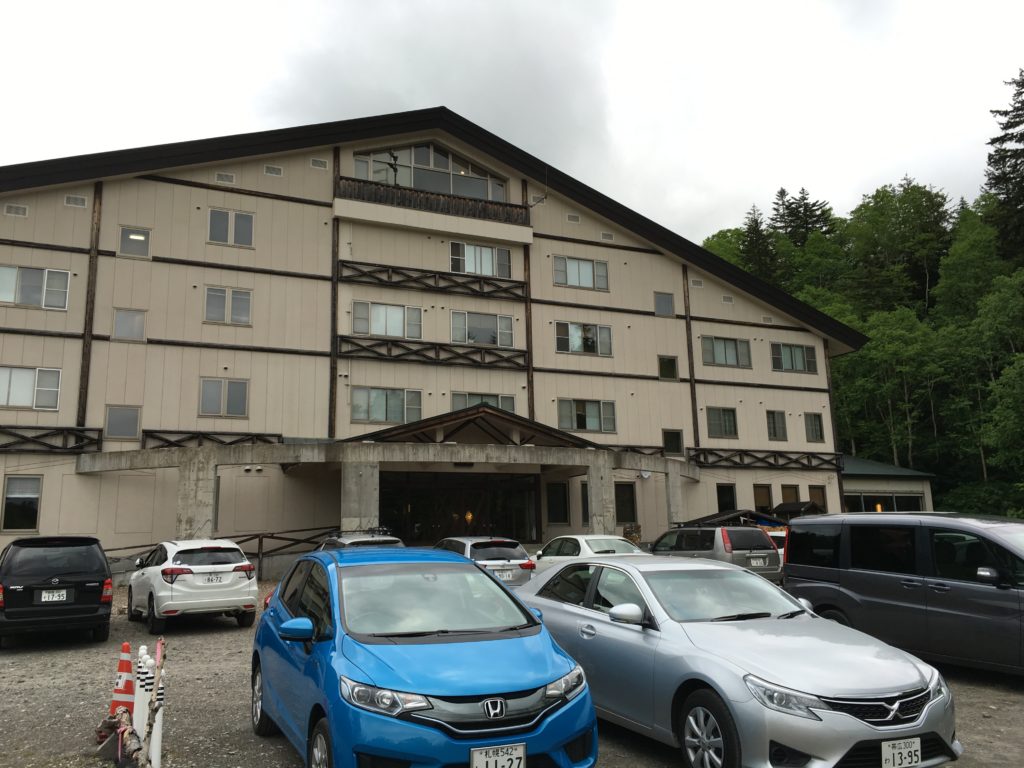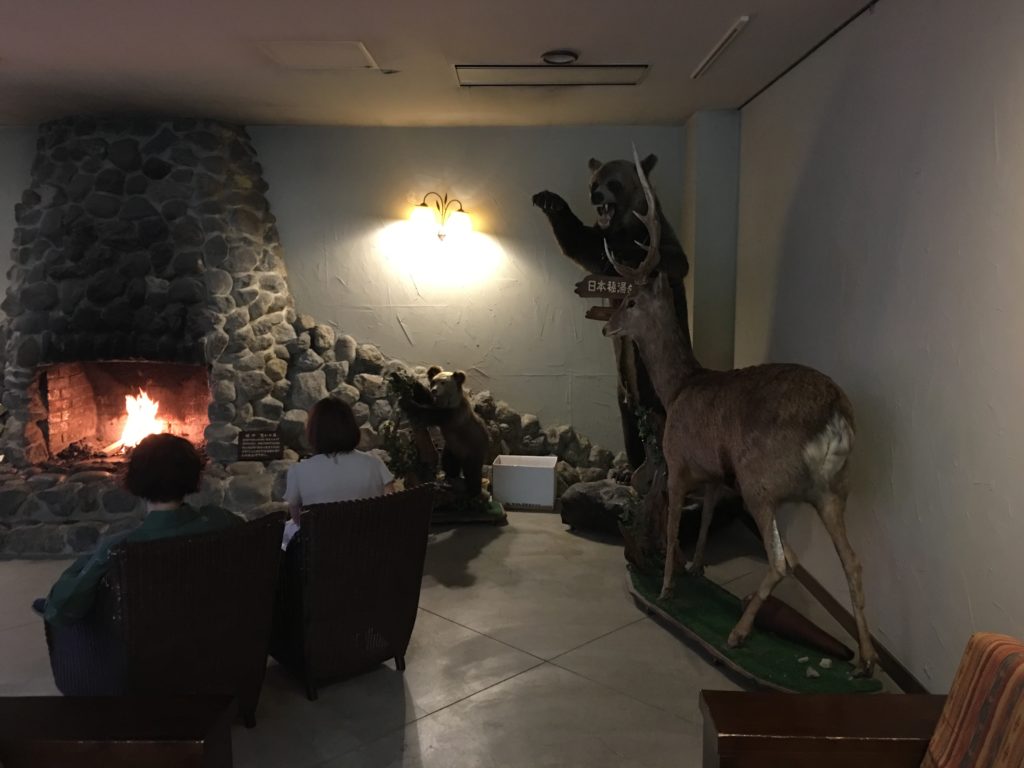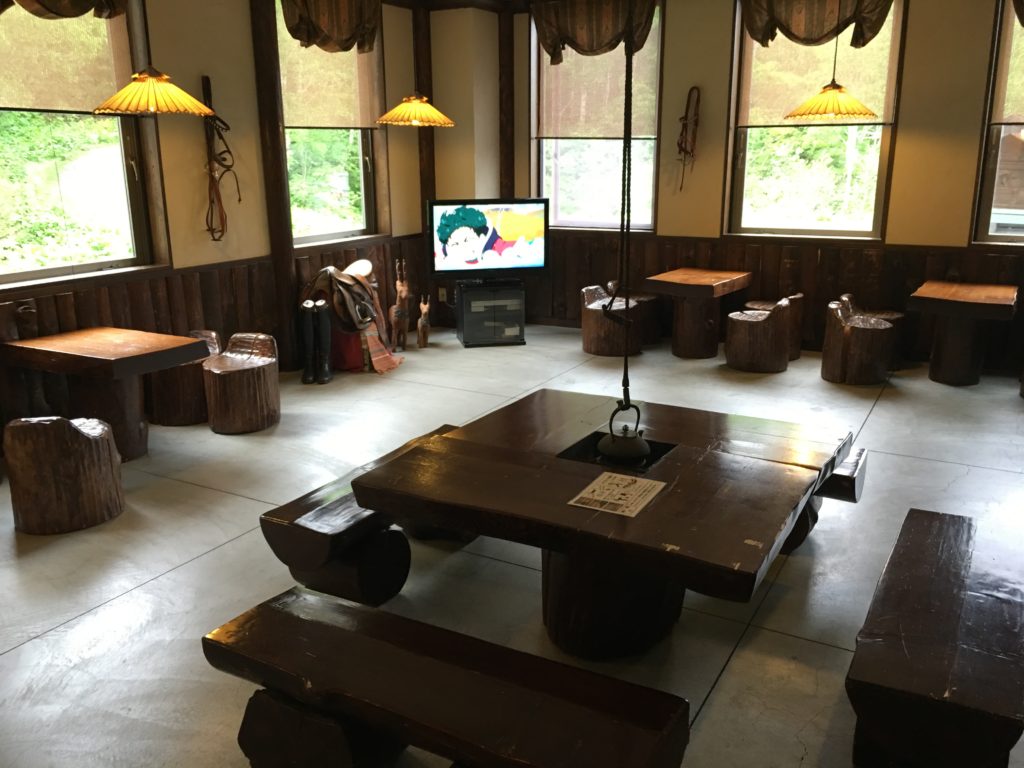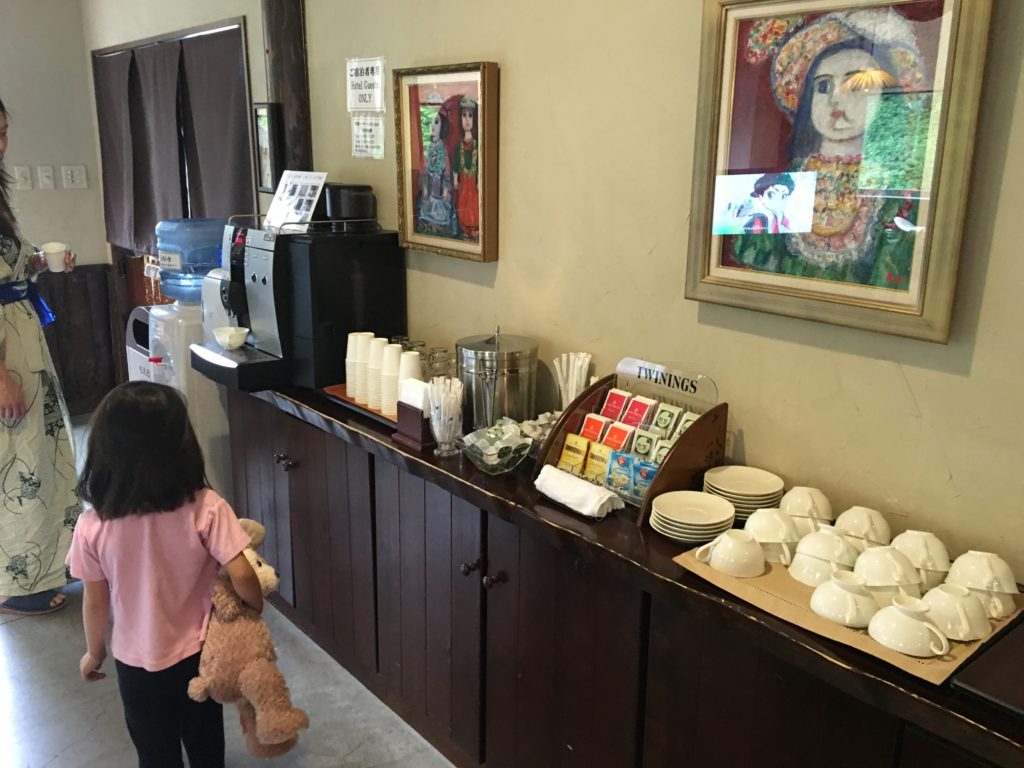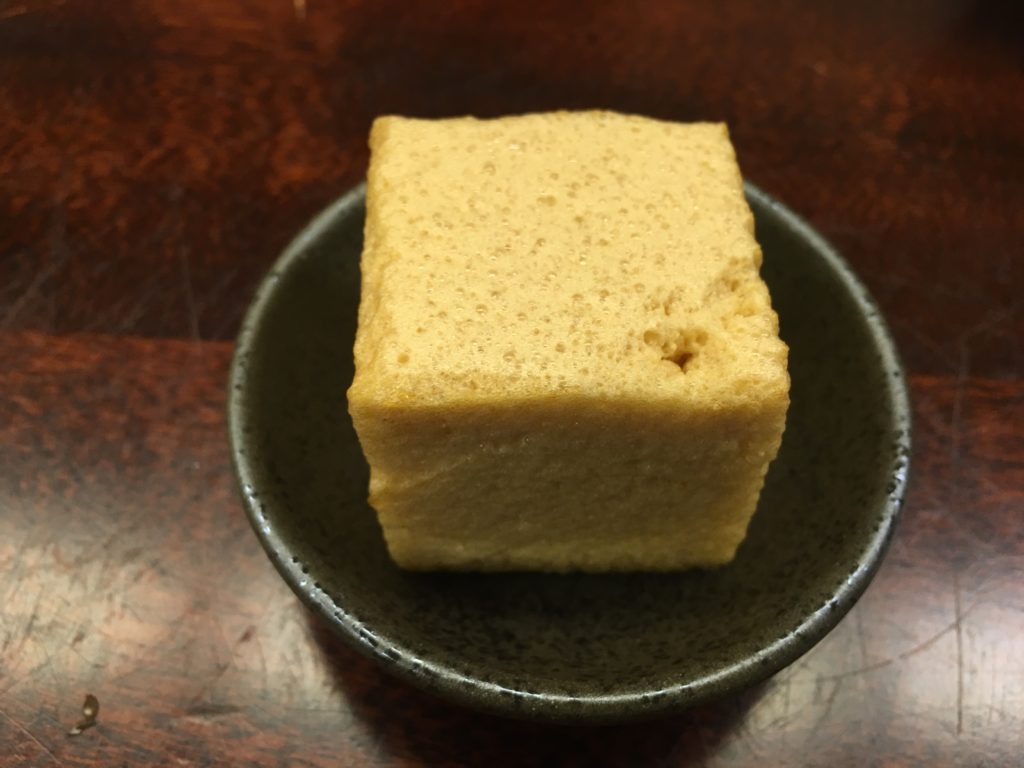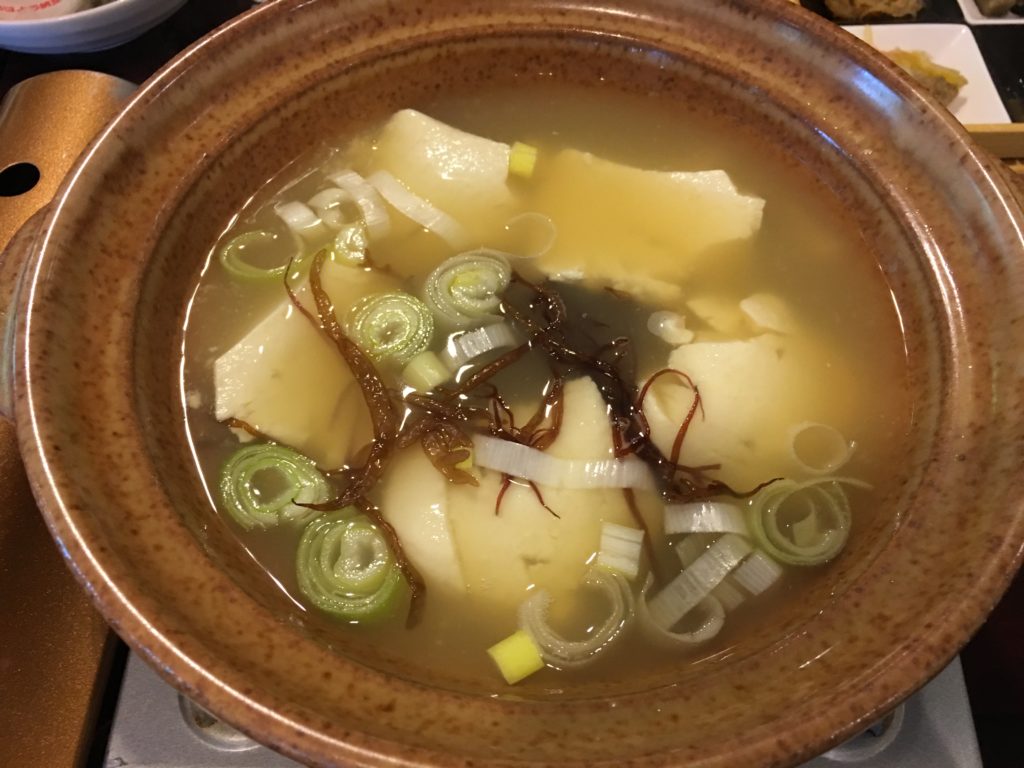
After wrapping up Asahikawa Ramen Village, it was time to head to our first of many ryokan. We booked Yumoto Yuomansou with the intent to do a little hiking and sight-seeing around Daisetsuzan National Park. As we drove from Ramen Village to Asahi-dake Mountain, the drive took about an hour as it is located in the neighboring town of Higashigawa. The kids continued their selfie antics here and there, while we drove through a very scenic road.
Mt. Asahi-dake is Hokkaido’s highest peak. Along the way, the landscape consisted of remote rice farms, trees, and lakes that were all green around us as it was the beginning of the summer months. These farms which are called satoyama, appear as though they work with nature as opposed to totally changing the land to farmland.
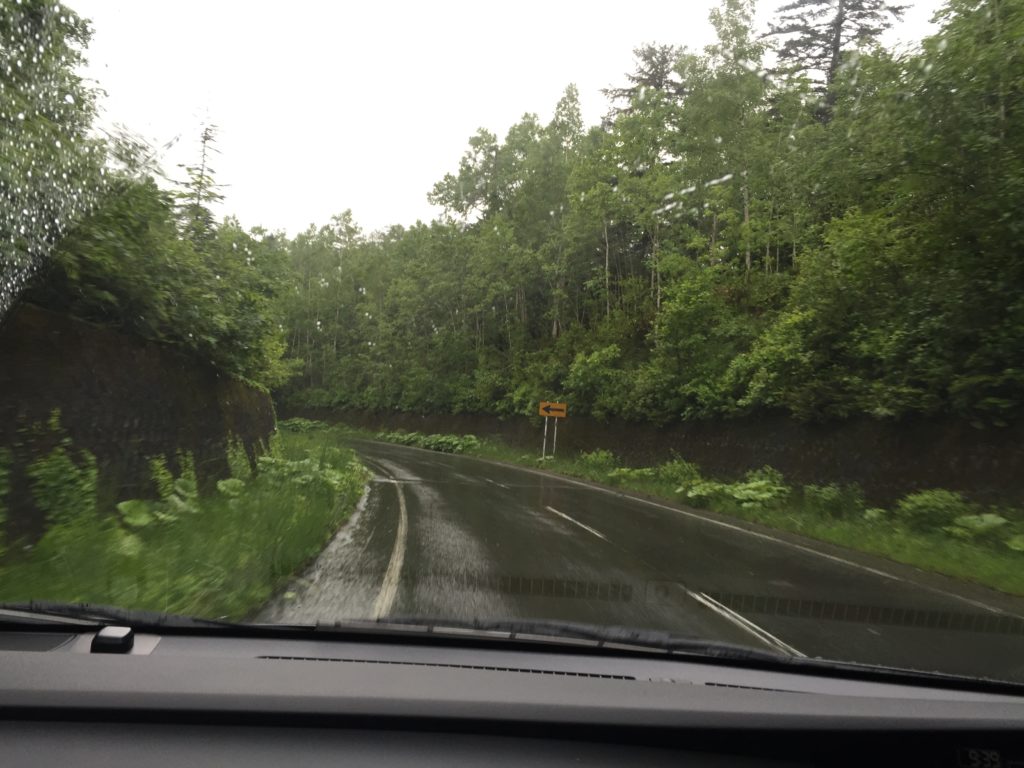
As we drove up Mt Asahidake, we only saw a handful of buildings, wooden lodges, and a couple of large hotel/ryokan, highlighting how remote we were from city life. The rain really started to pour as the wind got stronger. We drove up the mountain in the gloomy weather, watching the trees sway as we got close to our destination. This changed our plans as we originally wanted to visit the ropeway and do some hiking along the trails that leads up to the small ponds and sulfurous vents along the Daisetsuzan mountain trail. We ended up checking into our hotel early instead at Onsen Yumoto Yukomansou Ryokan.
Yumoto Yukomansou has a rustic exterior and was a little older than the ryokans we’ve stayed at previously at Hakone, Kinosaki, and Kawaguchiko.
The interior further highlights the rustic and untamed feel of Asahidake as they have the fireplace lit with burning wood. You can also see a stuffed deer and bear native to Hokkaido.
Cozy fireplace, but I would have enjoyed it more without the stuffed bear and deer overlooking the shoulder when I sat down.
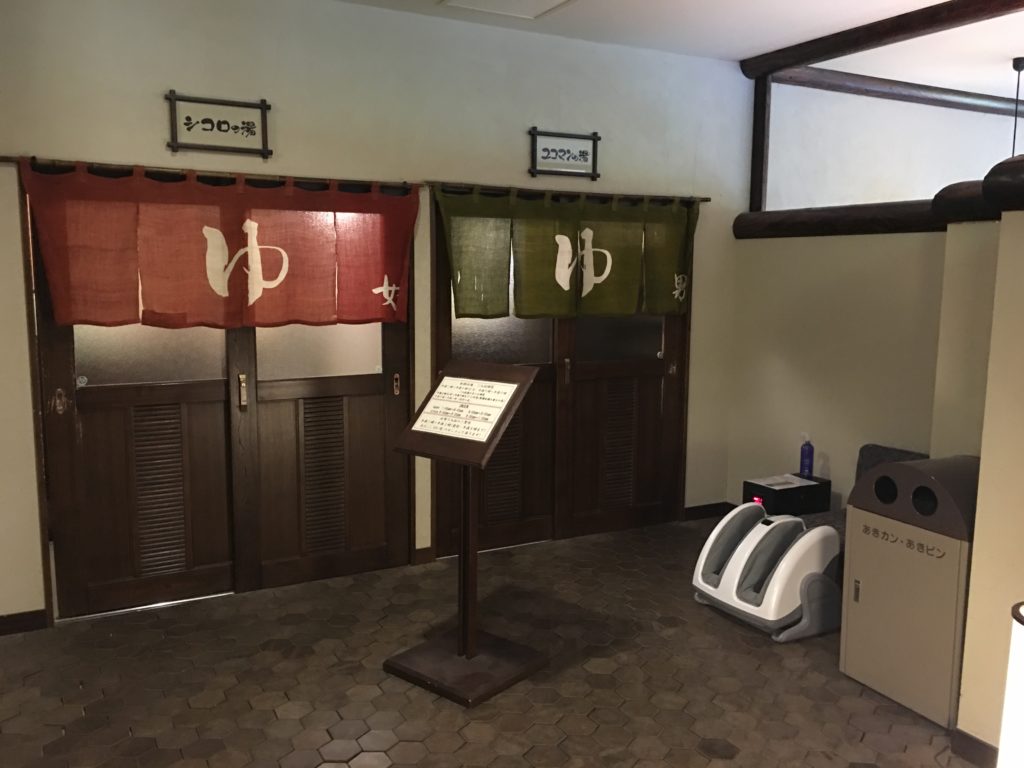
The onsen here includes three main bath areas. Two are reserved for hotel guests, one for the male area and another reserved for the female area. The last one is smaller and open to both guests and day travelers who either did hiking or skiing depending on the time of year. Each area has 3-5 different pools that have natural mineral water source from 5 different sources.
After soaking in the onsen, you can come to the lounge for coffee, tea, and even free beer in the evenings.
Self-service coffee and tea are available for the hotel guests. It’s a nice way to unwind after soaking in the onsen.

Table Tennis and some massage chairs can be found in the basement.
Coin laundry room if you need it.
Finally, this was our tatami room for the night. After settling in, we all went to bath and enjoyed the facility.
Dinner was soon served in the dining area as opposed to our room. We had a pretty large dinner and the course flowed in the following manner.
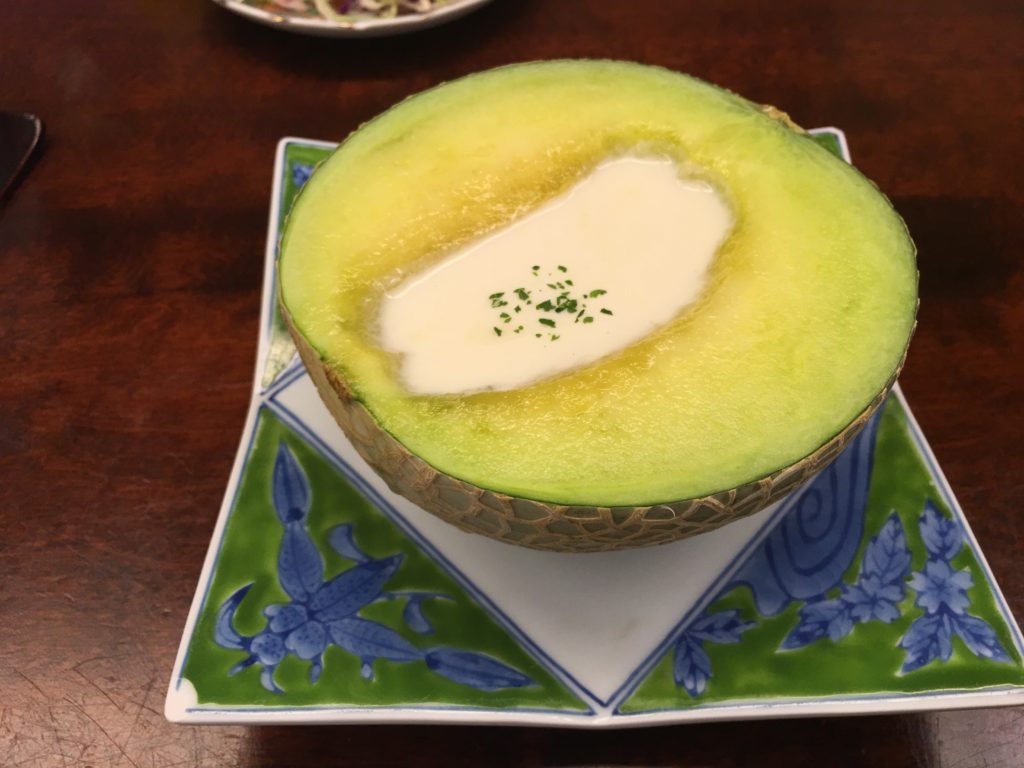
Vichyssoise is a thick soup made of pureed leeks, onions, potatoes, cream, and a stock. Here you eat the soup and melon together and have to be careful not to puncture the melon. Liked the melon, but not into the soup.

The local tomato from Hokkaido is plump and juicy. The acidic taste from the tomato cuts out the sweetness of the compote.
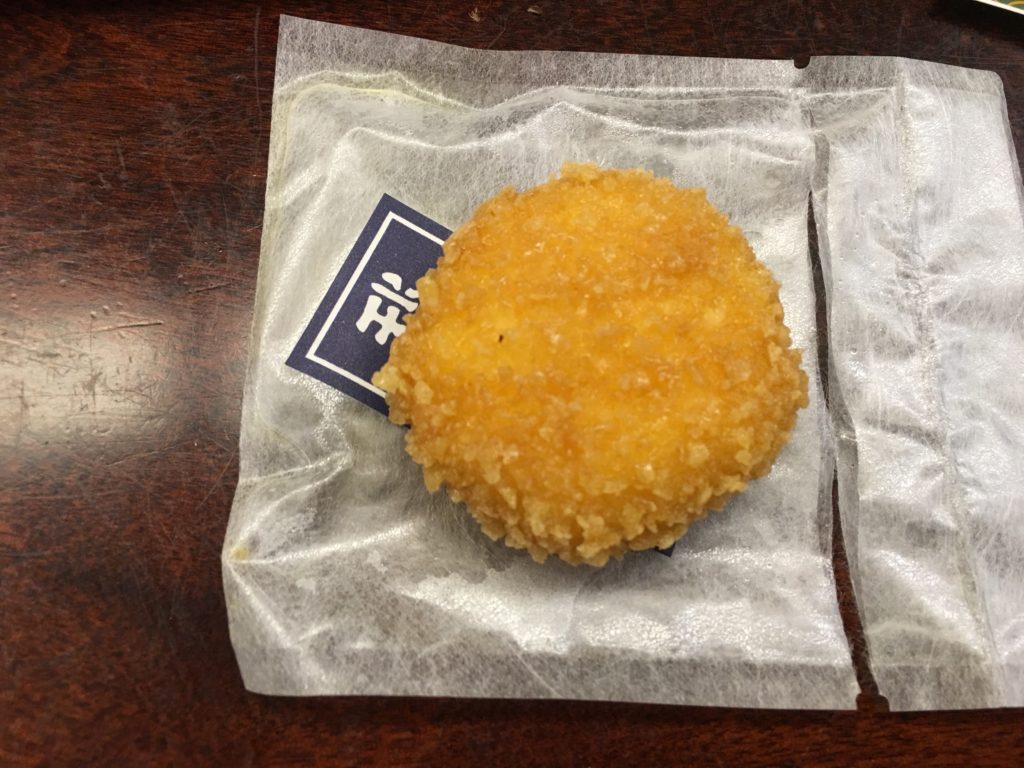
Ebi sinjo-age is a fried prawn dumpling.
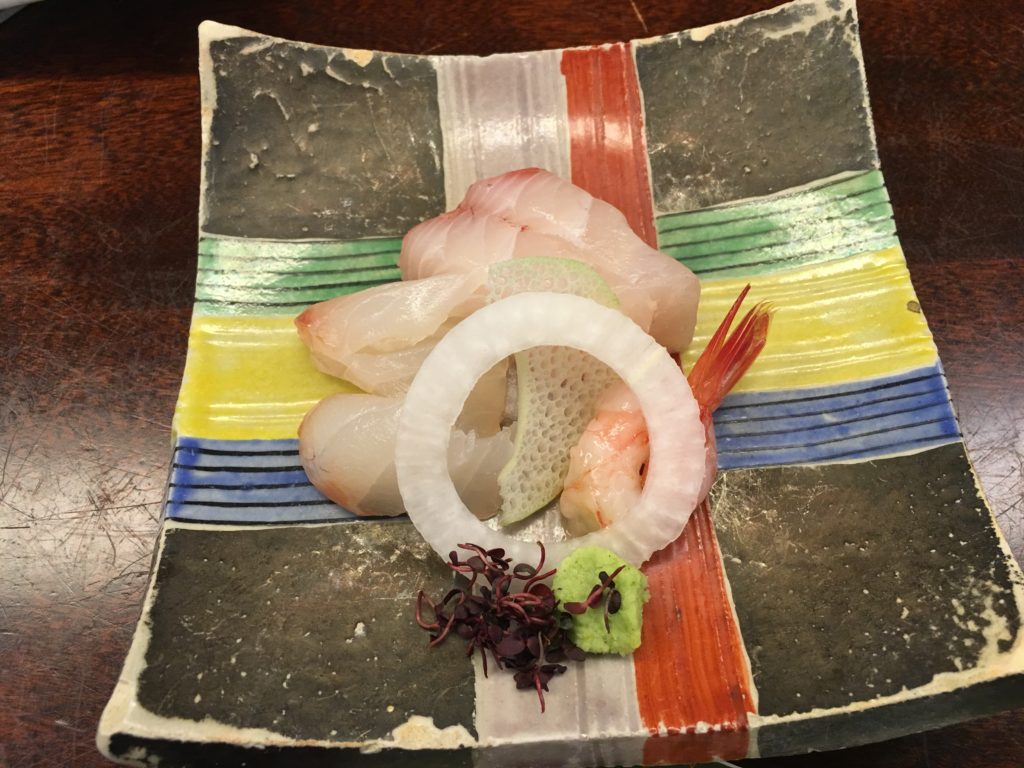
The server mentioned that we had slices of akamatsu, tai, and ebi.
This looks like tofu, but is actually the house made foam soy that is paired with the sashimi. You take a little with your chopstick and smear it on the sashimi and add a little wasabi and put it in your mouth. So interesting and so good.
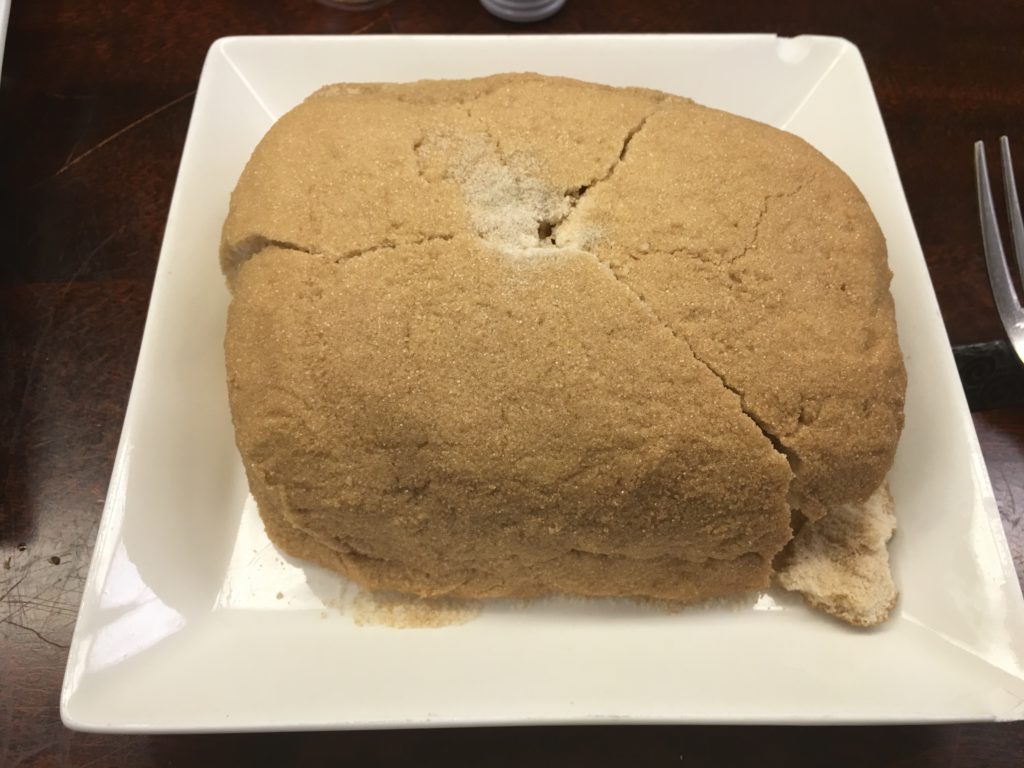
This is their signature dish, the salt baked awabi (abalone). It’s a pretty large-sized abalone, encased in salt. You cannot eat the crust and must carefully take out the awabi from the salt casing.

Once you unwrap the awabi from the kombu, you find a perfect, glistening and large-sized awabi that’s still in its shell.
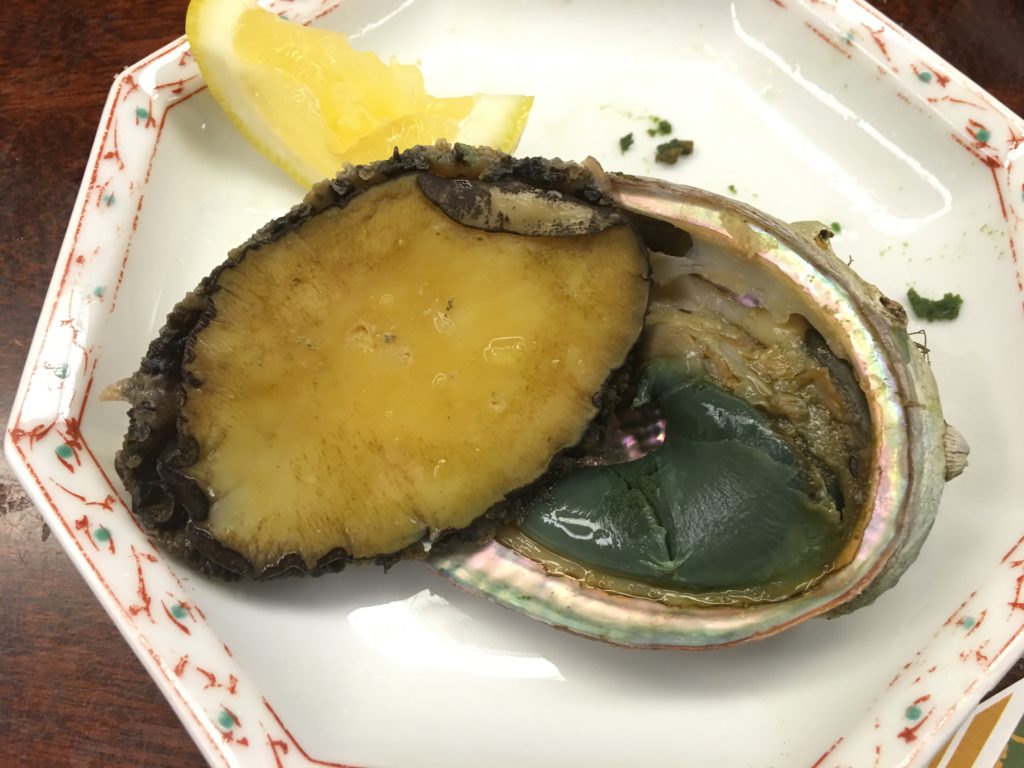
The awabi was soft and despite the salt crust, it was not too salty. The crust probably acted as a steaming vessel and the kombu (kelp) added umami and kept the awabi moist. They also kept the kimo or liver, which is a prized when the abalone is fresh. Overall, this was delicious.

The water jelly is made from the Asahidake region’s natural mineral water. It pretty much tasted like spring water, but still pretty cool.

The simple boiled onion is paired with black local miso. This serves as a palate cleanser for the nabe course to come.
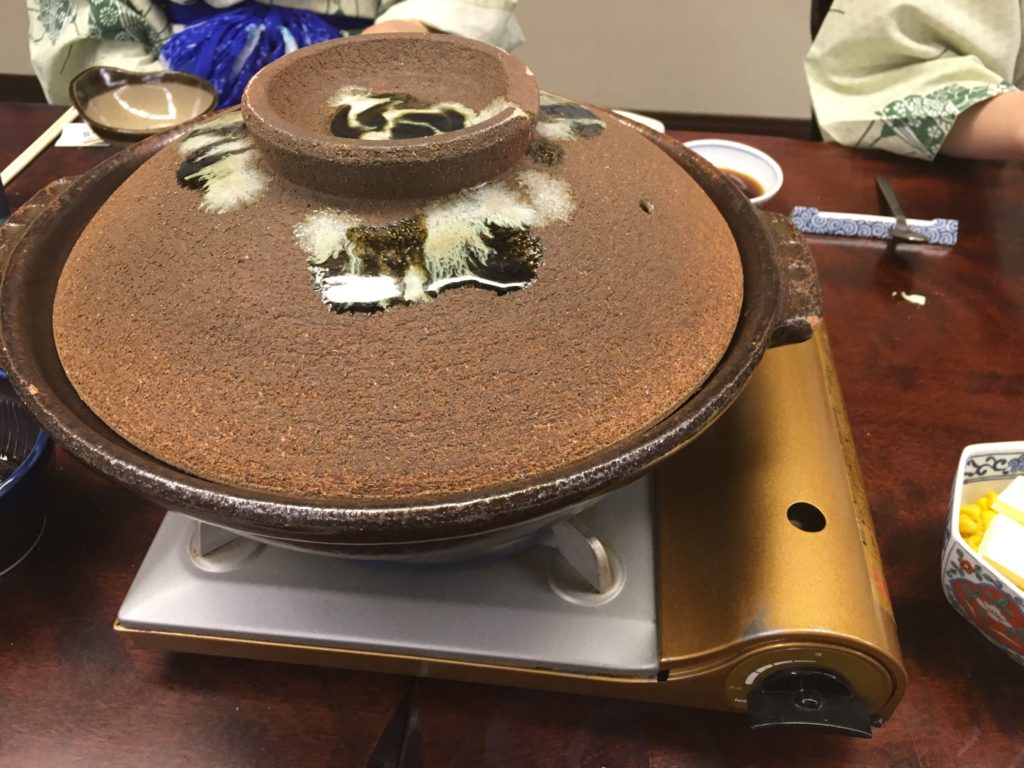
The donabe was next and set in front of us, and we waited until it boiled. Once boiled, we opened the lid…
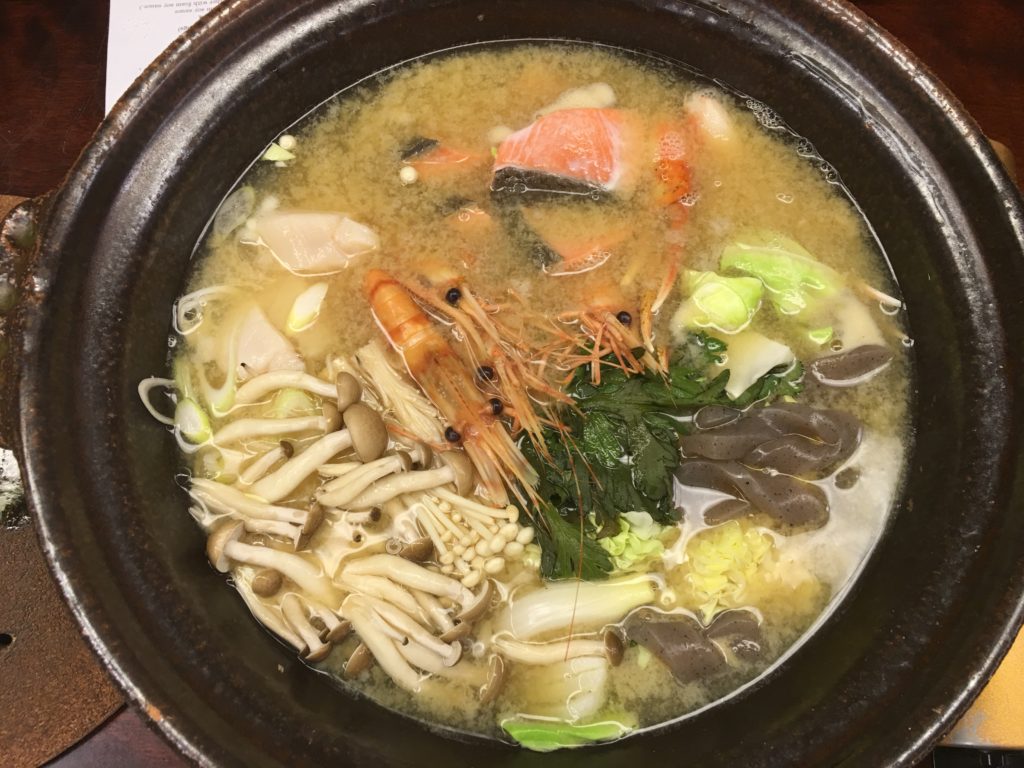
It was ishikari nabe- that’s famous in Hokkaido. Our ishikari nabe was miso based and the customary melted butter. It had salmon, spot pawn, scallop, crab claw salmon, cabbage, shimeji mushroom, enoki, shinjiku, konpakyu, and potatoes. It’s a hardy soup that takes advantages of the vegetables and seafood of Hokkaido.
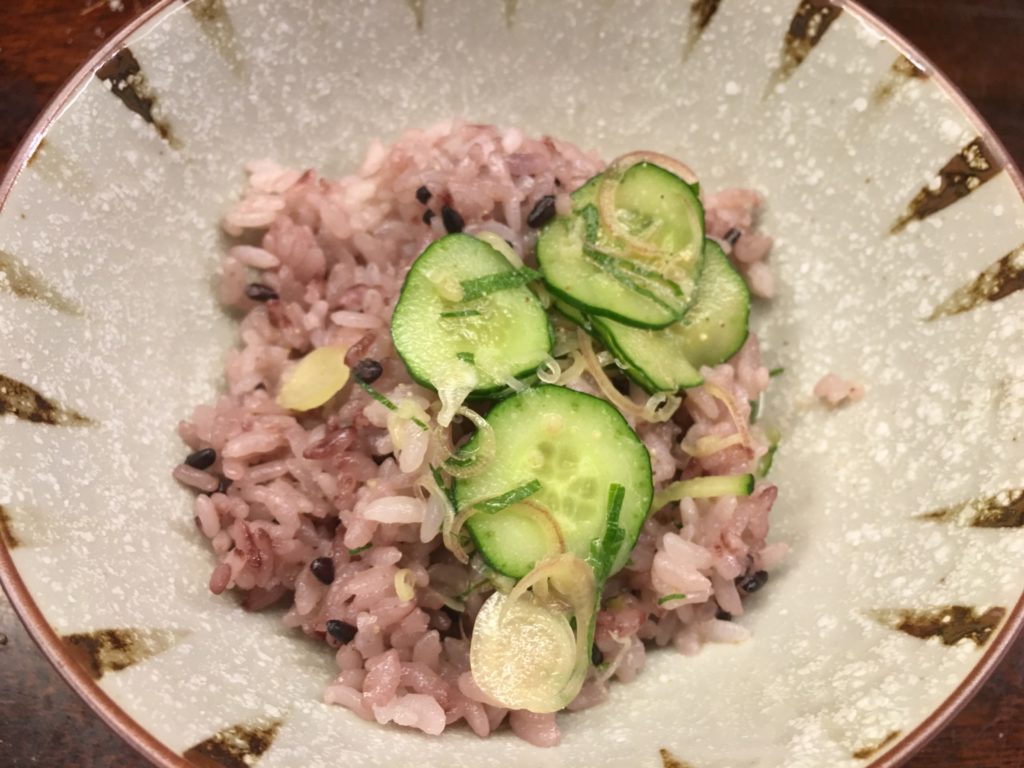
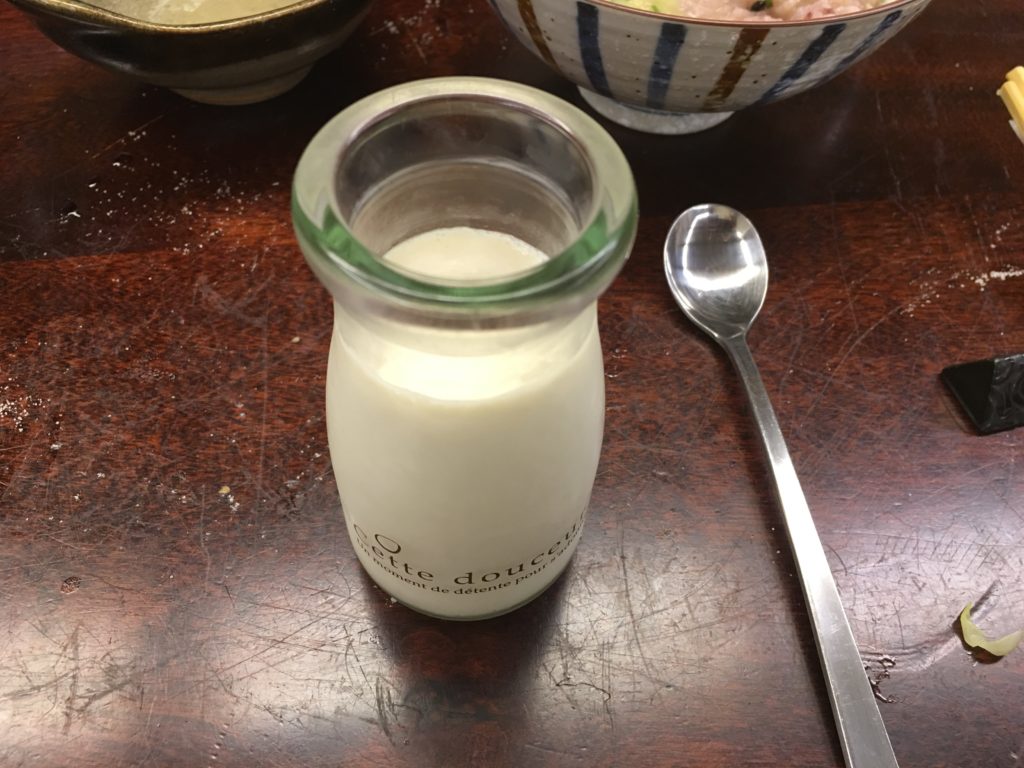
The dessert was a pudding that was coffee flavored. For being a coffee flavor, it was surprisingly white.
After the hardy meal, my family mostly rested for the night as dinner took almost three hours. I like to continue to take advantage of the onsen and the facility before taking a rest for the night.
We only stayed one night in this area, and it included breakfast. We had the following:
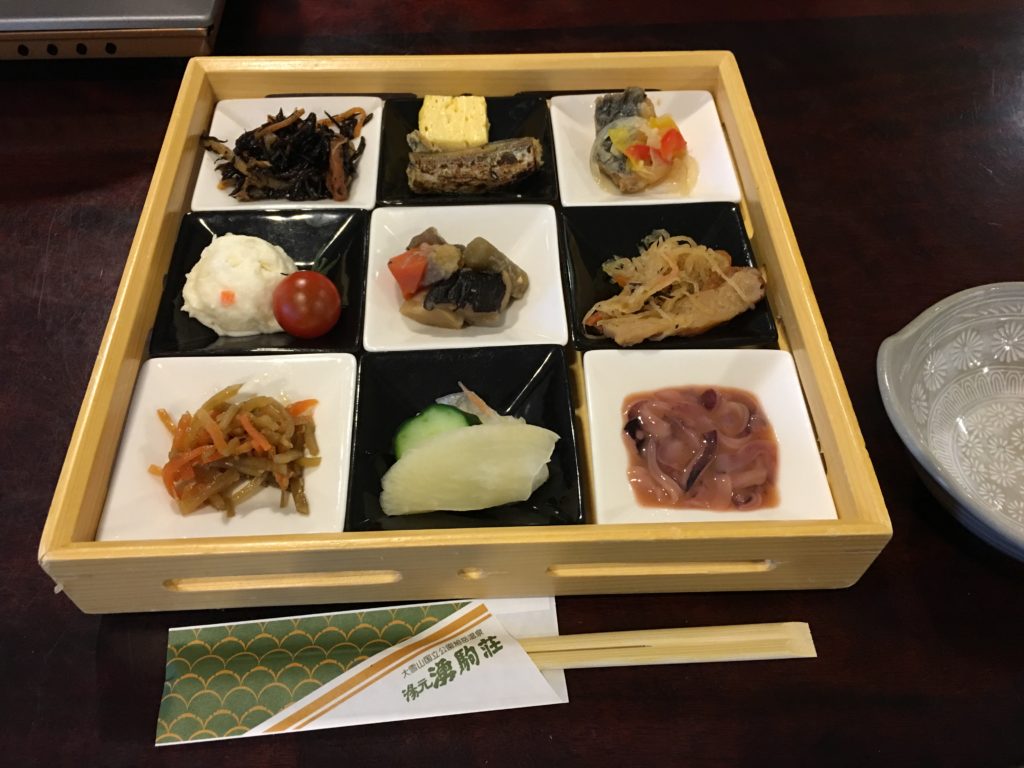
The mixed box of appetizers had from top right to left then down – Hijiki seaweed, tamagoyaki (omelet) and shishamo (smelt with roe), Aji-no-nanban duke (deep-fried horse mackerel then braised in spicy sauce), potato salad, chikuzen-ni (braised chicken and root vegetables), kiriboshi-daikon (dried radish), kinpira (burdock and carrots), oshinko (japanese pickles), and ika-shiokara (salted squid guts)
Another donabe pot was set in front of us.
This time it had Yu-dofu hot pot, or simply a tofu hot pot.
Self-service table.
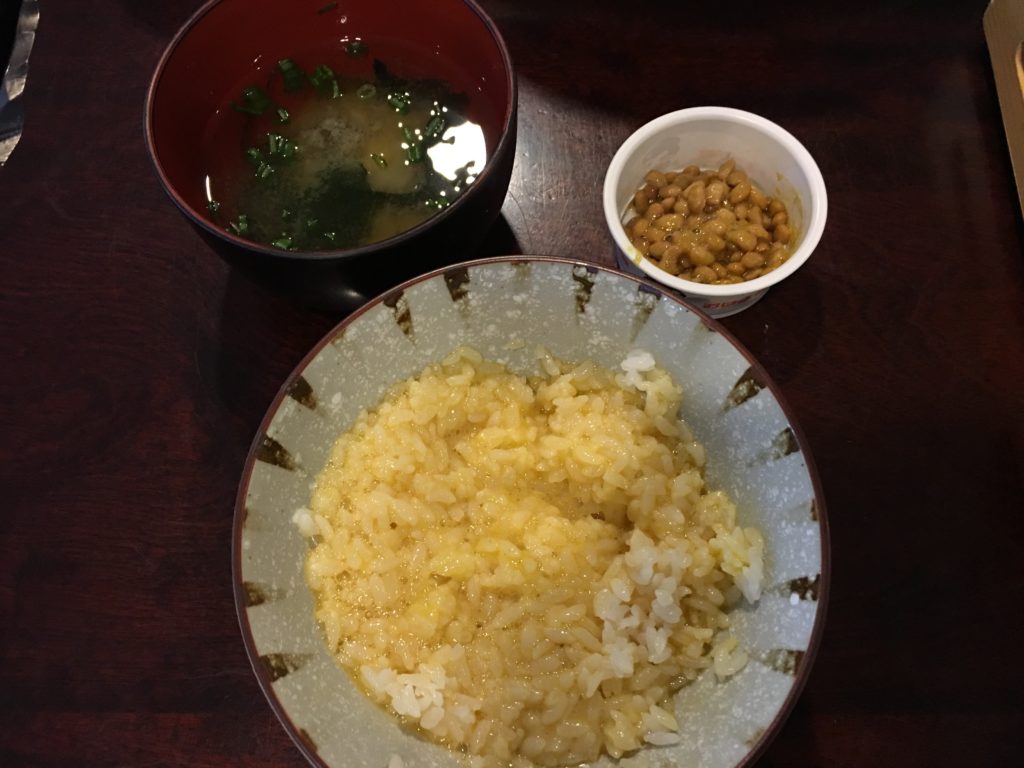
This is a simple and common breakfast stable I have seen in Japan. You simply crack a raw egg over steamed rice. It was really good. I even paired it with the natto (fermented soy beans).
Once we finished breakfast, it was time to head out and continue our adventure, which you can read here.
